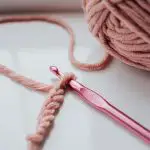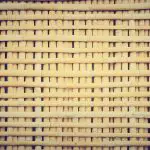Are you wondering if leather snaps can be used on fabric? Look no further!
In this article, we will delve into the world of leather snaps and explore the different types available. We will guide you on how to choose the right leather snaps for your fabric projects and provide step-by-step instructions on how to attach them.
Additionally, we will share tips and tricks for using leather snaps on fabric, as well as alternative fastening options.
Let’s get started!
Table of Contents
Understanding Leather Snaps
Leather snaps are commonly used for fastening various materials, including fabric. If you’re exploring snap alternatives for your fabric projects, it’s important to understand the compatibility of leather snaps with different types of fabric.
Leather snaps are durable and sturdy, making them a popular choice for heavy-duty fabrics like denim or leather itself. The strength of leather snaps ensures a secure fastening that can withstand frequent use and strain.
However, when it comes to lightweight or delicate fabrics such as silk or chiffon, leather snaps may not be the best option. The force required to snap and unsnap leather snaps could potentially damage or tear these delicate fabrics. In such cases, it is advisable to consider other snap alternatives like plastic snaps or metal snaps.
Plastic snaps are lightweight and gentle on fabrics, making them suitable for delicate materials. Metal snaps, on the other hand, offer durability and a wide range of styles, making them a versatile option for various types of fabric.
Exploring Different Types of Leather Snaps
Snap buttons made from different materials can offer unique and versatile fastening options for various types of fabric. When it comes to leather snap alternatives, there are a few options to consider.
Here are three benefits of leather snaps that you might find appealing:
-
Durability: Leather snaps are known for their strength and durability. They can withstand frequent use and provide a long-lasting fastening solution for your fabric projects. This durability makes them ideal for items that require frequent opening and closing, such as bags, jackets, or wallets.
-
Aesthetics: Leather snaps add a touch of elegance and sophistication to your fabric creations. The natural texture and color variations of leather can enhance the overall appearance of your garment or accessory, making it stand out from the crowd.
-
Ease of Use: Leather snaps are easy to install and operate. They typically feature a simple snap-on mechanism that allows for quick and hassle-free fastening. This makes them a convenient choice for anyone, whether you are a seasoned seamstress or a beginner.
Choosing the Right Leather Snaps for Fabric
When choosing the right leather snaps for fabric, there are three key points to consider: size and strength, compatibility with fabric, and the installation process and tools required.
Firstly, you should choose snaps that are the appropriate size and strength for your project, ensuring they can withstand the necessary tension.
Secondly, it is crucial to select snaps that are compatible with the fabric you are working with, ensuring they will securely attach without causing damage.
Lastly, familiarize yourself with the installation process and gather the necessary tools to ensure a successful and hassle-free application.
Size and Strength
The size and strength of fabric snaps should be considered when choosing the right ones for your project. Here are three important factors to keep in mind:
-
Size limitations: Ensure that the snaps you choose are suitable for the thickness and weight of your fabric. Using snaps that are too small can result in them easily pulling through the fabric, while snaps that are too large may create unsightly gaps or cause the fabric to bunch up.
-
Durability considerations: Consider the intended use of your project and select snaps that can withstand the demands placed on them. If your project will be subject to frequent opening and closing, opt for snaps that are known for their durability and resistance to wear and tear.
-
Strength requirements: Evaluate the strength needed for your project. If you’re working on something that requires a secure closure, such as a bag or jacket, choose snaps that have a higher weight capacity to ensure they won’t come undone easily.
Compatibility With Fabric
Choosing the right snaps for your project means considering how well they will work with different types of fabric. Snap compatibility is essential for successful fabric fastening.
When selecting snaps, it’s important to consider the weight and thickness of your fabric. Lightweight fabrics like silk or chiffon may require smaller, more delicate snaps, while heavier fabrics like denim or leather may need larger, sturdier snaps for a secure fastening.
Additionally, the type of fabric can affect how the snaps adhere to the material. Smooth fabrics like satin or cotton may provide better grip for snaps, while textured or loosely woven fabrics may be more challenging to fasten.
Consider the fabric’s characteristics and choose snaps that are compatible to ensure a strong and durable fastening.
Installation Process and Tools
To successfully install snaps on your project, make sure you have the necessary tools and follow the correct process. Here are three important tips to keep in mind when installing snaps on different fabric types:
-
Choose the right fabric: Different fabrics require different snap installation techniques. For delicate fabrics like silk or chiffon, it’s important to use thin and lightweight snaps to avoid damaging the material. For heavier fabrics like denim or leather, you can use sturdier snaps that can withstand more tension.
-
Prepare the fabric: Before installing snaps, make sure to reinforce the fabric by adding interfacing or extra layers of fabric behind the snap area. This will provide additional support and prevent the fabric from tearing or fraying.
-
Use the right tools: Invest in a good snap installation kit that includes a snap setter, an awl, and a hammer. These tools will help you securely attach snaps to your fabric without causing any damage.
Preparing Your Fabric for Leather Snaps
Before attaching the leather snaps, make sure you’ve properly prepared your fabric. The type of fabric you’re working with will determine the best way to prepare it for the snaps. For lightweight fabrics like cotton or linen, it’s important to reinforce the area where the snaps will be placed. You can do this by adding a small piece of interfacing or fusible webbing to the backside of the fabric. This will help prevent the snaps from tearing through the fabric when they’re attached.
For heavier fabrics like denim or canvas, reinforcing may not be necessary. However, it’s still a good idea to mark the placement of the snaps before attaching them. You can use chalk or a fabric marker to make small dots where the snaps will go. This will ensure that they’re evenly spaced and aligned when you attach them.
When deciding on snap placement, consider the functionality and aesthetics of your project. If you’re attaching snaps to a garment, make sure they’re placed in a location that allows for easy closure and opening. If you’re working on a bag or accessory, think about how the snaps will look when they’re fastened. Experiment with different placements before committing to a final position.
Attaching Leather Snaps to Fabric: Step-by-Step Guide
In this discussion, we will explore three key points for attaching leather snaps to fabric.
First, we will delve into snap compatibility options, considering the types of snaps that work best for fabric materials.
Next, we will examine fabric preparation techniques to ensure a secure and long-lasting attachment.
Snap Compatibility Options
Are leather snaps compatible with fabric? Yes, leather snaps can be used on fabric. However, there are a few things you should consider when selecting snaps for fabric durability:
-
Material: Choose leather snaps that are made from high-quality materials, such as brass or stainless steel. These materials are more durable and less likely to rust or break over time.
-
Size: Make sure to select the right size of snaps for your fabric. Snaps that are too big or too small can cause damage to the fabric or result in a weak connection.
-
Installation: Proper installation is crucial for the longevity of leather snaps on fabric. Follow the recommended guidelines and use the right tools to ensure a secure and lasting attachment.
Fabric Preparation Techniques
Make sure to properly prep your fabric before starting your project. Fabric treatment is an essential step to ensure successful fabric attachment.
To start, examine the fabric for any stains, dirt, or residue. Remove these by gently hand washing or spot cleaning the fabric, following the manufacturer’s instructions. If necessary, iron the fabric to remove any wrinkles or creases.
Next, consider applying a fabric stabilizer or interfacing to strengthen and stabilize the fabric, especially if it’s lightweight or prone to stretching. This will help prevent any distortion or puckering during the fabric attachment process.
Finally, trim any loose threads or frayed edges to achieve a clean and polished look.
Securing Snaps Effectively
Take a moment to ensure the snaps are secure by pressing firmly with a snap setter tool. Securing snaps effectively is crucial to maintaining the integrity of your fabric or leather project.
Here are three reasons why you should pay attention to properly securing snaps:
-
Durability: When snaps are not securely fastened, they can easily come undone, compromising the functionality and longevity of your garment or accessory.
-
Aesthetics: Loose or poorly secured snaps can create an unkempt appearance, detracting from the overall look and craftsmanship of your project.
-
Peace of mind: Knowing that your snaps are securely fastened gives you confidence that your creation will withstand regular use and maintain its quality over time.
While there are alternative fasteners available, snaps remain a popular choice due to their ease of use and versatility. Take the time to ensure your snaps are properly secured for a reliable and polished finished product.
Tips and Tricks for Using Leather Snaps on Fabric
When using leather snaps on fabric, you’ll want to ensure that you’re applying enough pressure to securely fasten them together. Different fabric types may require different techniques to achieve a strong and durable snap. For lightweight fabrics such as silk or chiffon, it’s important to use a small-sized snap to avoid creating visible holes or damage. On the other hand, heavier fabrics like denim or canvas can handle larger-sized snaps for a more secure hold.
Troubleshooting tips can come in handy when dealing with leather snaps on fabric. If you find that the snaps are not holding together properly, try adjusting the pressure applied during installation. Sometimes, applying a little extra pressure can help to secure the snap more effectively. Additionally, double-check that the snap components are aligned correctly before applying pressure. Misalignment can cause the snap to not fasten properly.
Maintaining Leather Snaps on Fabric
Maintaining leather snaps on fabric can be done by regularly cleaning and conditioning them to prevent any damage or deterioration over time. By following these simple steps, you can ensure that your leather snaps remain in good condition and securely fasten your fabric:
-
Clean gently: Use a soft, damp cloth to wipe away any dirt or debris from the leather snaps. Avoid using harsh chemicals or abrasive cleaners, as they can damage the leather.
-
Condition regularly: Apply a leather conditioner to the snaps to keep them moisturized and prevent them from drying out or cracking. This will also help to maintain their flexibility and ensure a smooth, secure closure.
-
Store properly: When not in use, make sure to store your fabric snaps in a cool, dry place away from direct sunlight. This will help to prevent any fading or discoloration of the leather and maintain its overall quality.
Alternative Fastening Options for Fabric
Now that you’re aware of how to maintain leather snaps on fabric, let’s explore alternative fastening options for your fabric projects. While leather snaps are a popular choice, there are other options available that may better suit your needs. Here are some alternative fasteners to consider, along with their pros and cons.
| Fastener | Pros | Cons |
|---|---|---|
| Buttons | Versatile, available in various sizes and designs | Require sewing and may need reinforcement |
| Zippers | Secure closure, easy to open and close | Can be challenging to install, limited flexibility |
| Hook and loop (Velcro) | Quick and easy to use, adjustable fit | Can lose effectiveness over time, may snag on fabric |
| Snaps | Durable, secure closure | Require specific tools for installation, limited design options |
| Magnetic snaps | Easy to use, strong closure | May damage sensitive fabrics, limited weight capacity |
When choosing a fastening option, consider the specific requirements of your project. Buttons offer versatility but require sewing, while zippers provide secure closure but can be challenging to install. Hook and loop fasteners are quick and adjustable, but they may lose effectiveness over time. Snaps are durable but require specific tools for installation. Magnetic snaps are easy to use but may damage sensitive fabrics. Evaluate the pros and cons of each option to find the best fastener for your fabric project.
Conclusion
In conclusion, using leather snaps on fabric is a great way to add a stylish and durable fastening option to your projects. With the right type of leather snaps and proper preparation, attaching them to fabric can be a straightforward process. By following the step-by-step guide and taking care of your leather snaps, you can ensure their longevity.
However, if leather snaps are not suitable for your fabric or if you prefer alternative options, there are plenty of other fastening options available to choose from.
- How Does Ring Spun Cotton Affect Garment Fit and Shape Retention? - August 13, 2024
- What Are the Challenges in Producing Ring Spun Cotton? - August 13, 2024
- Is Ring Spun Cotton Suitable for Plus-Size Clothing? - August 13, 2024






